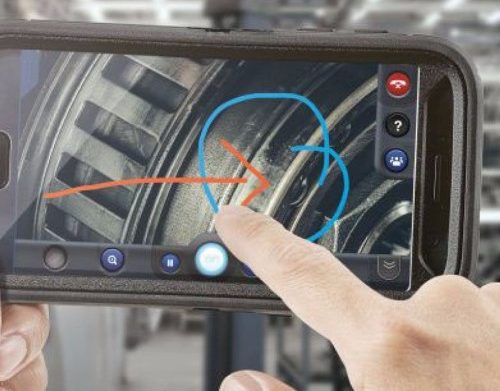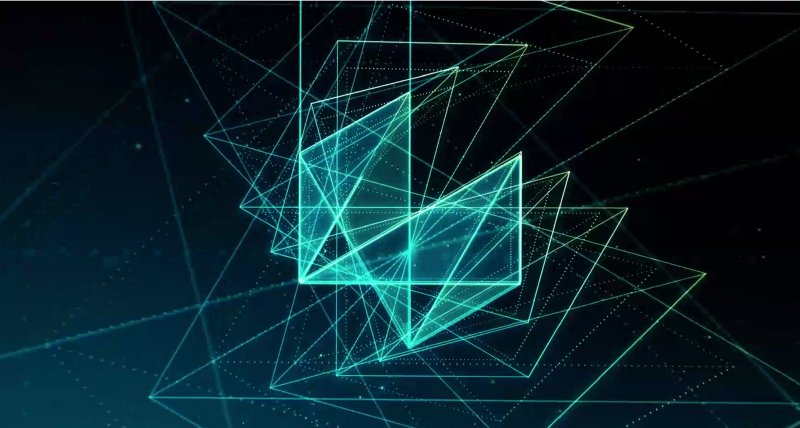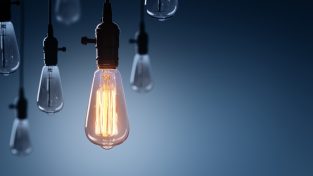BK: Welcome back to HXGN RADIO, my name is Brian, thanks for joining us. Librestream‘s Onsight platform brings the eyes and ears of experts in the field to collaborate on things virtually. Using Onsight, remote teams see the live video, talk, draw and share images with field staff, customers or external suppliers to assess operations and resolve issues immediately. Even when operating in difficult physical and network environments. Librestream offers a combination of the hardware and software solutions that help workers operate better, faster and safer.
Today I’m here with Charlie Neagoy, VP of Business Development at Librestream, and in today’s episode, we will be talking about digitising the worker’s day. Thanks for joining us, Charlie.
CN: Happy to be here, Brian. Thanks.
BK: Good. Tell us about Librestream.
CN: Great lead-off on that. So we’re in the business of putting experts’ eyes and ears out in the field without them physically having to go into the field. So when the worker is encountering a difficult situation, they need a little expert on their shoulder. Rather than having to wait for that expertise, we can get them there immediately, get them there virtually.
BK: Excellent, excellent. Love it. So what does it bring to the Hexagon PPM world?
CN: So we’re a very industrial application, so our customers typically are those that operate in difficult environments. Oil and gas, aviation and aerospace, heavy manufacturing. Places that are difficult physically, but also difficult network-wise, and so, for example, if you’re an EPC and you’re putting together a brand-new facility for a refinery. That is not a place that you have a lot of infrastructure. So we’re built from the ground up and from the origins of our company to operate in those remote field environments.
BK: Excellent, excellent. Now we talked about digitising the worker’s day. What does that all mean?
CN: So when you think about it, a lot of the technology that we sort of take for granted in sort of the carpeted areas of the world are not always available to those workers that are in the field. So what we want to do is bring those tools to those workers in the field, but we have to adapt them to their difficult environments. To some of their unique requirements. Maybe they’re in PPE or they don’t have access to the connectivity and devices and things like that. So what we’re bringing is some hardware that is custom designed for that environment. Operable by wearing gloves, drop it on a concrete floor. You’re in a zone environment in oil and gas, Class One, Div two type of equipment.
But beyond that, we’re also trying to make that worker more effective when they’re operating either on their own or the ability to pull in an expert to help them at any time.
BK: Excellent. So functional, effective and helping them also be more efficient as well.
CN: Absolutely. We’ve been deployed for about 12 years in the field, and it’s been an evolutionary trip. So a lot of the features and capabilities in our platform came from customers saying, “Hey, we need something that can do this.” Or, “This is a problem we’re having, how would you help us solve that?” And the nice thing about that, we get the benefit of that because we get real-world feedback from real-world customers solving real problems.
And as we bring those capabilities into our platform, it just enhances it. And what’s eventually created out of this is a system that is evolved for these kind of environments.
BK: Nice. So yeah, as you’re getting that real-world feedback, real time almost, saying, “Hey, help us with this. This is still a problem.” What’s the feedback as result? I’m sure it’s good. But I’m just curious to hear if you have any specific stories.
CN: It’s funny, we’ve seen some kind of the evolution of it, customers first getting introduced to our technology saying, “Wow, we didn’t even think this was possible.” Now we’re getting more and more embraced … because fundamentally we’re a live-streaming video platform. That was our origins and our backbone. So if you think about video and live video in particular, it’s the most difficult payload to carry. Because it’s big and because it’s live, nobody wants to have latency issues and I think about watching live sports, right? You don’t want to see the NBA finals shot at the buzzer freezing in mid-air.
So we end up with kind of a very high bar from a performance standpoint and we built an infrastructure that can carry that payload. And what we now have is essentially a road that we created that essentially carries other payloads. So now when we start implementing things like augmented reality or workflows and checklists and the manufacturing process, things like that, we can run those on the road that we’ve already built.
So we begin to layer on top of the live video AR, VR and other things like that as those things come into their maturity.
BK: Excellent. Love it! So describe a little bit about how the platform can impact capital project completion, ongoing life cycle management and all that.
CN: Sure. I’ll give you a couple of examples because we humans learn best from stories, right? So I’ll give you an example. Noble Drilling. Offshore drilling company, operates all over the world, based in Houston. And they have drill rigs everywhere. Now they’ve deployed our platform on their platforms, and instead of having to get an expert from Houston out to a rig like in this case, they had a problem with a rig off the coast of Africa in Angola. And the expert that knew how to diagnose and solve that problem sits in Houston. Now normally it takes a couple days, close to $50,000, to get that individual to the rig. Instead of doing that, they fire up our Onsight platform, the guys on the rig are showing him what they’re seeing, he’s able to diagnose what’s going on, talk the guys there through solving it, and get the whole rig up and running in three hours.
BK: Wow.
CN: So we always say we’re in the time machine business, right? We’re taking, we’re turning days into hours and hours into minutes. And in this case, we took two days and we made it three hours. We’re very excited about this because when they told us, this is a fantastic example, right? We saved you guys $50,000. It’s great. And they said no, you don’t get it. We really don’t care about $50,000. You know, I shouldn’t say that, I’m sure Noble Drilling cares about $50,000, but you know, they said what we care more about is the two days. Because that rig runs for $1.6 million a day. So $3.2 million and that’s a common thing we see everywhere, where it’s not the direct cost avoidance, it’s not the “Hey, I saved X in travel or whatever.”
It’s always what we call “The Secondary Effect.” The downtime avoidance. And if you had to draw a thread through all of our customers, it’s usually companies that have expensive, complex CAPEX deployments, high expectation of up time, long expected operating lifetimes, regular service and maintenance. You know, we’re basically describing most of Hexagon’s customers in this case. But the most important thing is extremely high cost of down time. And so that benefit, the time savings, dwarfs any direct cost savings. It’s just a recurring theme we get over and over.
BK: Wow, that’s amazing. That’s great to hear that. So, I mean you sort of touched on this a little bit, but additional big challenges that are facing the industrial landscape as well.
CN: Sure. We work in a lot of different industries and there is a theme that we’ve seen that is affecting every single company, probably, certainly worldwide and pretty much certainly in the United States and its expertise shortage. So it really comes out of the demographics. If we look at the average age of a field tech, it’s about 55. And it’s actually, the distribution is bi-modal. Really the average field tech, there’s a big slug of them that are all Baby Boomers, that are in their late 50s and there’s a whole bunch that are in their 20s. It’s sort of the handoff between the Baby Boomers and the Millennials.
The Baby Boomers are starting to retire en masse, 170 million people. And they’re walking out the door for the last time and they take with them 25, 30, 35 years of knowledge and experience. And when that happens in aggregate, in large scale like it’s happening right now, you have this knowledge drain. And as we talk to our customers about this, now all the heads in the room start nodding. Yeah, we’ve got that same problem. And how do you deal with it? Well, you have two challenges, right? How do you preserve the knowledge, the scarce knowledge that remains in the experts that are still there and then how do you even convey that to what is fundamentally a different generation? They’re actually two generations removed.
So what our platform is doing is taking an expert and saying, “You don’t have to jump in the field anymore. You can stay right in your office. You can retire and move to Florida and give us four hours a week. And we’re going to force multiply your knowledge and experience and you’re going to help somebody in Seattle. And 30 minutes later you’re going to help somebody in Boston. And 30 minutes after that, you’re going to help somebody in Sao Paolo.”
So it’s a force multiplier that knowledge, but then the other piece of it is retaining that knowledge. And so while we talk a lot about live streaming and things like that, we actually have a knowledge base in our platform that allows you to capture data, video, images, that sort of thing, within the system. So two years from now when I’m trying to fix compressor XYZ at customer 123, I can look up and say what do we have on that? Oh, here’s a video we shot two years ago on how to fix this. Or here’s what that crack looked like two years ago. And we can see that it’s propagated by two millimeters over that period of time.
So you begin to encapsulate the knowledge into a platform that never retires.
BK: Yes, that makes so much sense, I mean it really does.
CN: The other piece of it that’s interesting is when you have this generational handoff, I’m late 40s, but I have kids that are teenagers that have never known a time when they couldn’t stream video, Facetime, whatever. It’s become kind of the common language. There’s an age, it’s probably somewhere mid 20s, that if you ask somebody to look something up on a search engine, somebody my age is going to go to Google, right? But somebody younger is going to go to the second most popular search engine in the world which is YouTube. Because there’s a threshold in which people want to see a video instead of read it.
So when we’re conveying things in video which is a much more information-dense way to convey something and it’s the show me how to do it.
BK: Absolutely. Yeah, it’s really neat though and I’m glad you’re passing that on correctly, because you’re right. There are people, they exit then what? Oh my gosh, what am I going to do? What’s the company going to do? But I like how you’re transitioning people very nicely. It’s working well. Having that database too and I’m assuming it’s very searchable, like you were saying the crack, has it gotten any bigger? You can easily type that in and it’s right there, I’m assuming.
CN: Exactly.
BK: I love that, I love that. So where is technology over delivered on its promise? We can talk about that and then also the under-deliver side of things and how you’re addressing that as well.
CN: A lot of times we are the benefactors of, let’s say something like the ubiquity of the smartphone. So our platform, we do make our own hardware for again these rugged environments, but at the same, because when we developed this, there was no such thing as a smartphone. Back in ’03 was when we started. But of course, very quickly we’ve got, I think it’s smartphones to the tune of like 3 billion or something worldwide and growing very rapidly. We can take advantage of that ubiquity of that device. And selfishly, Apple, Samsung and LG and everybody else, they spend billions of dollars making that stuff better and better every year. We get that all for free.
So we’re taking, that’s a classic over deliver, right? We have this incredibly powerful infrastructure if you will that’s out there that we can take advantage of and it’s just like cheap storage or cheap processing power or broadband internet. When you give, when technology gives you tools and capabilities, people find really creative ways to use it. And again, we are collectively, all of us, the benefactors of that.
BK: Excellent. Love it. Well I’m excited about what you’re doing. Anything else you want to share as we wrap up?
CN: Just, this has been great. So thanks for having us.
BK: Absolutely. Charlie thank you so much. Appreciate it. Thanks for everything you do and for sharing all this information.
CN: Thanks, BK.
BK: More information on digitising the worker’s day at libresteam.com. That’s L-I-B-R-E and then stream.com. Be sure to tune in to more episodes of HxGN RADIO over at HXGNradio.com. Or you can go to iTunes, Soundcloud or Stitcher Radio, and thank you for listening.

















